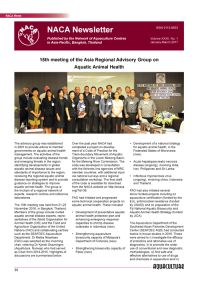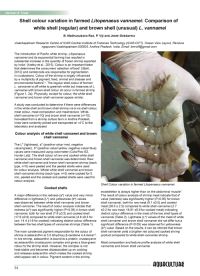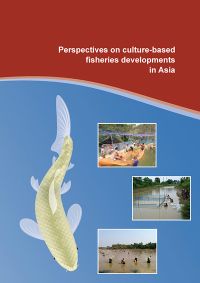In this issue:
The 15th meeting of the Asia Regional Advisory Group on Aquatic Animal Health; a regional consultation on responsible production and use of feed in aquaculture; a report on the Giant Prawn 2017 conference; a preview of the new NACA website; and new initiatives on a very serious emerging issue - reducing the human and animal health risks from development of anti-microbial resistance in the aquaculture industry.
The regular shell colour of farmed Litopenaeus vannamei is off-white to greenish-white but instances of L. vannamei with brown-shell colour do occur in farmed shrimp. A study was conducted to determine if there were differences vis-à-vis shell colour, meat colour, meat composition and meat texture. White-shelled vannamei was determined to be better in terms of meat composition and texture profile but brown-shelled vannamei yielded a more brightly red-coloured cooked product.
Due to the recent increase in aquaculture and the rising demand for marine ingredients for use in pelleted feeds, there is concern that aquaculture is contributing to the over-exploitation of fishing stocks. There is a growing need for aquaculture enterprises to be able to demonstrate responsible practices, including the source of any marine ingredients used in the compound feed. Responsible sourcing can be demonstrated by purchashing ingredients that have been approved under the IFFO RS standard.
Concerns about the health and safety of consumers are the driving force for the enforcement of traceability systems for aquaculture products. DOF's strategy to improve food safety related to shrimp production is a “Farm-to-Table” approach. This has been implemented through the development of a Code of Conduct for the marine shrimp industry, establishment of Good Aquaculture Practices for hygienic shrimp production, and documentation requirements for movement of chemical agents and purchase of aquatic animals.
This book is the proceedings of the “Regional Consultation on Culture-Based Fisheries Development in Asia”, held in Siem Reap, Cambodia, 21-23rd of October 2014, under the auspices of the Australian Centre for International Agricultural Research (ACIAR), the Mekong River Commission (MRC) and the Network of Aquaculture Centres in Asia-Pacific (NACA). The consultation was jointly organised by NACA and the Fisheries Administration of the Royal Government of Cambodia.


